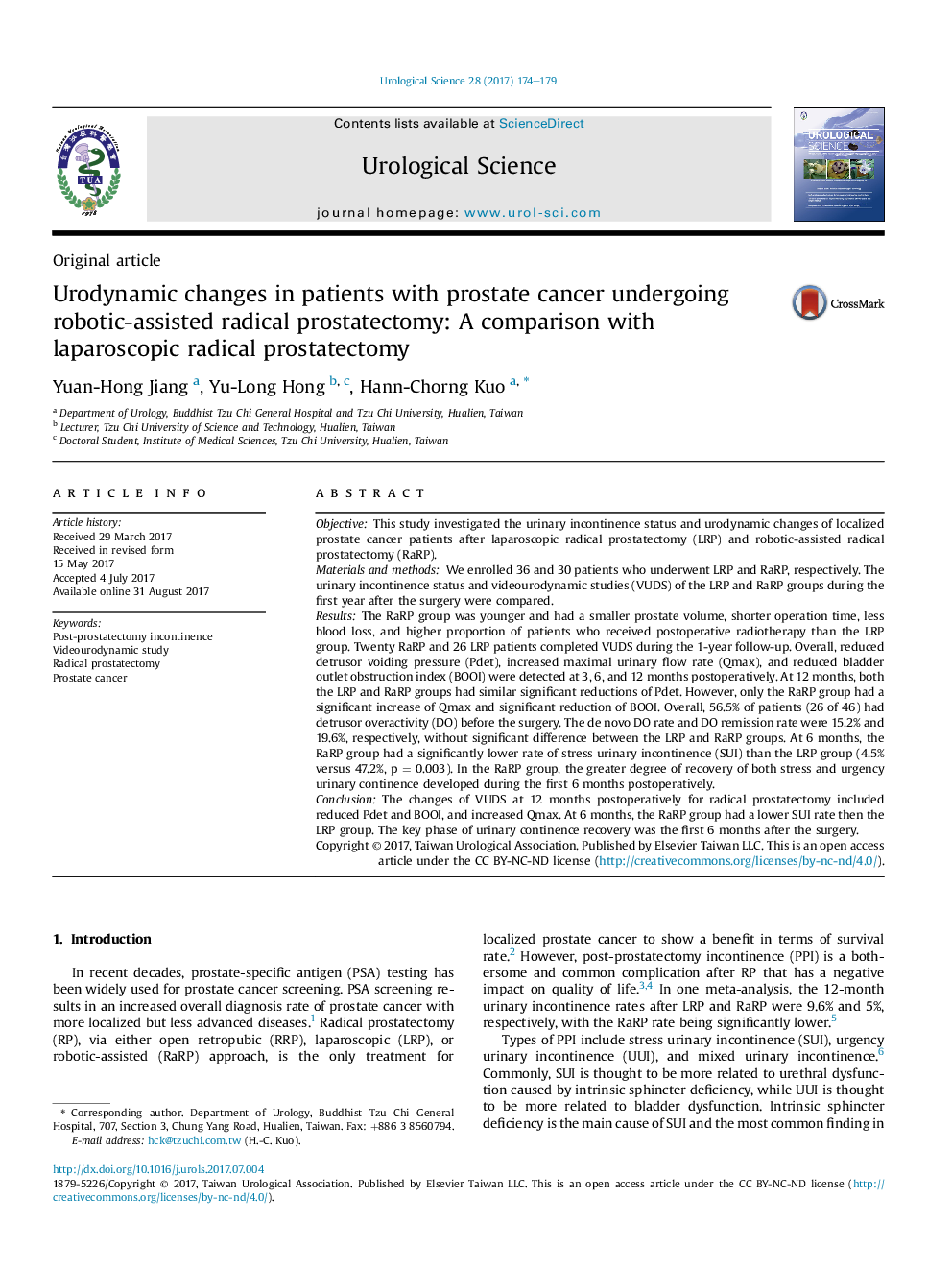| کد مقاله | کد نشریه | سال انتشار | مقاله انگلیسی | نسخه تمام متن |
|---|---|---|---|---|
| 5730656 | 1611153 | 2017 | 6 صفحه PDF | دانلود رایگان |
ObjectiveThis study investigated the urinary incontinence status and urodynamic changes of localized prostate cancer patients after laparoscopic radical prostatectomy (LRP) and robotic-assisted radical prostatectomy (RaRP).Materials and methodsWe enrolled 36 and 30 patients who underwent LRP and RaRP, respectively. The urinary incontinence status and videourodynamic studies (VUDS) of the LRP and RaRP groups during the first year after the surgery were compared.ResultsThe RaRP group was younger and had a smaller prostate volume, shorter operation time, less blood loss, and higher proportion of patients who received postoperative radiotherapy than the LRP group. Twenty RaRP and 26 LRP patients completed VUDS during the 1-year follow-up. Overall, reduced detrusor voiding pressure (Pdet), increased maximal urinary flow rate (Qmax), and reduced bladder outlet obstruction index (BOOI) were detected at 3, 6, and 12 months postoperatively. At 12 months, both the LRP and RaRP groups had similar significant reductions of Pdet. However, only the RaRP group had a significant increase of Qmax and significant reduction of BOOI. Overall, 56.5% of patients (26 of 46) had detrusor overactivity (DO) before the surgery. The de novo DO rate and DO remission rate were 15.2% and 19.6%, respectively, without significant difference between the LRP and RaRP groups. At 6 months, the RaRP group had a significantly lower rate of stress urinary incontinence (SUI) than the LRP group (4.5% versus 47.2%, p = 0.003). In the RaRP group, the greater degree of recovery of both stress and urgency urinary continence developed during the first 6 months postoperatively.ConclusionThe changes of VUDS at 12 months postoperatively for radical prostatectomy included reduced Pdet and BOOI, and increased Qmax. At 6 months, the RaRP group had a lower SUI rate then the LRP group. The key phase of urinary continence recovery was the first 6 months after the surgery.
Journal: Urological Science - Volume 28, Issue 3, September 2017, Pages 174-179
